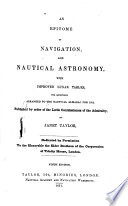 | Janet Taylor - Nautical astronomy - 1851 - 674 pages
...the first and third terms may be of the same kind, and the second the same am the number required. Multiply the second and third terms together, and divide the product by the first term, then the quotient will be the answer in the same denomination as the second term, observing to point... | |
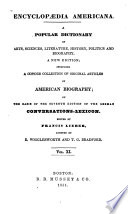 | Francis Lieber, Edward Wigglesworth, Henry Vethake - Encyclopedias and dictionaries - 1851 - 624 pages
...less, place the greater of these two terms on the left, and the less in the middle ; and in both cases, multiply the second and third terms together, and divide the product by the first term for the answer, which will always be of the same denomination as the third term. — Note 1. If the... | |
 | G. Morrison - Arithmetic - 1851 - 130 pages
...greater than the third, place the least of the other two terms as the first ; but it' less, the contrary. Multiply the second and third terms together, and divide the product by the first, and the quotient is the answer, and which is always of the same name with that to which the third term... | |
 | George Roberts Perkins - Arithmetic - 1851 - 356 pages
...Having written the three terms of the proportion, or, as usually expressed, having stated the question, then multiply the second and third terms together, and divide the product by thejlrst term. NOTE.—Since there is a ratio between the first and second terms, they mast be reduced... | |
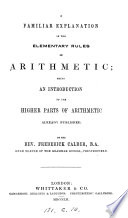 | rev. Frederick Calder - 1852 - 368 pages
...so : and if the third term consist of several denominations, reduce it to the lowest name mentioned. Then multiply the second and third terms together, and divide the product by the first: the quotient will be the answer or fourth term, expressed in the same denomination as that in which... | |
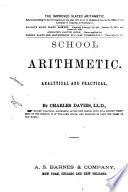 | Charles Davies - 1852 - 344 pages
...number named in connection with it for the first term, and the remaining number for the second term. II. Multiply the second and third terms together, and divide the product by the first term : Or, Multiply the third term by the ratio of the first and second. NOTES. — 1. If the first and... | |
 | Joseph Bateman - Excise tax - 1852 - 376 pages
...cases, whether the question relates to whole or mixcd numbers or to decimals, and is as follows: — Multiply the second and third terms together, and divide the product by the first ; the quoticnt is the answer.* * This rule was formerly ealled the " Rule of Thrce," beeause, in ench... | |
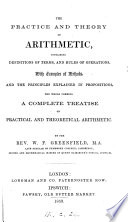 | William Frederick Greenfield - 1853 - 228 pages
...the first and second, or the first and third, terms have any common divisor, divide them hy it. 6. Multiply the second and third terms together, and divide the product by the first. 7. The quotient will be the answer required, in the denomination to which the third term was reJuced,... | |
 | Thomas Tucker Smiley - Arithmetic - 1854 - 192 pages
...second terms to the same denomination, and to the lowest denomination mentioned in either of them. 3. Multiply the second and third terms together, and divide the product by the first term; the result will be he fourth term, or answer, in the same denomination to which the third term was reduced.... | |
 | Frederick Emerson - Arithmetic - 1854 - 228 pages
...than the third, make the less of the two remaining terms the second term, and the greater the first. Multiply the second and third terms together, and divide the product by the first term: tht quotient will be the fourth term, or answer. If there are different denominations in the first... | |
| |